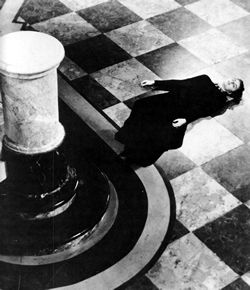
"Go ahead, make my day." Dirty Harry succinctly informs a norm violator that he anticipates deriving satisfaction from inflicting altruistic punishment.
CREDIT: WARNER/MALPASO/THE KOBAL COLLECTION
Why exactly do people - and other animals as well - so often cooperate instead of pursuing their individual goals independently, especially in circumstances when there are opportunities for short-term gain by cheating? "It's better to be nice", "For the Good of the Group", and other such sentiments are all well and good, but why isn't altruistic behaviour "selected against" in a world ruled by evolution and the survival of the fittest? Natural selection works directly on individuals, but only indirectly on groups, so group selection is rather tricky in practice.
There have been several interesting new papers in the past year on the role of punishment in maintaining cooperative behaviour: from evolutionary, game-theoretic and neurobiological perspectives.
First a trio of classic books touching on the subject of cooperative behaviour:The Evolution of Cooperation by Robert Axelrod. The Prisoner's Dilemma, Tit for Tat.
The Selfish Gene by Richard Dawkins. Kin Selection.
Sociobiology by E.O. Wilson. The Magnum Opus.
Next a newspaper article on one of the colorful pioneers of the evolutionary theory of behaviour, Robert Trivers.Boston Globe (March 27, 2005)While researching Trivers I stumbled across a wonderful blog by a very attractive thinker
Teardrop Souffle.
From an economic, game theoretic point of view, the article that introduced "The Paradox of the Commons":The Tragedy of the Commonsby Garrett Hardin
Science (13 December 1968)"In economic affairs, The Wealth of Nations (1776) popularized the "invisible hand," the idea that an individual who "intends only his own gain," is, as it were, "led by an invisible hand to promote . . . the public interest" (5). Adam Smith did not assert that this was invariably true, and perhaps neither did any of his followers. But he contributed to a dominant tendency of thought that has ever since interfered with positive action based on rational analysis, namely, the tendency to assume that decisions reached individually will, in fact, be the best decisions for an entire society"
The rebuttal to the invisible hand in population control is to be found in a scenario first sketched in a little-known pamphlet (6) in 1833 by a mathematical amateur named William Forster Lloyd (1794-1852).
The tragedy of the commons develops in this way. Picture a pasture open to all. It is to be expected that each herdsman will try to keep as many cattle as possible on the commons. Such an arrangement may work reasonably satisfactorily for centuries because tribal wars, poaching, and disease keep the numbers of both man and beast well below the carrying capacity of the land. Finally, however, comes the day of reckoning, that is, the day when the long-desired goal of social stability becomes a reality. At this point, the inherent logic of the commons remorselessly generates tragedy.
As a rational being, each herdsman seeks to maximize his gain. Explicitly or implicitly, more or less consciously, he asks, "What is the utility to me of adding one more animal to my herd?" This utility has one negative and one positive component.
1) The positive component is a function of the increment of one animal. Since the herdsman receives all the proceeds from the sale of the additional animal, the positive utility is nearly +1.
2) The negative component is a function of the additional overgrazing created by one more animal. Since, however, the effects of overgrazing are shared by all the herdsmen, the negative utility for any particular decision-making herdsman is only a fraction of 1.
Adding together the component partial utilities, the rational herdsman concludes that the only sensible course for him to pursue is to add another animal to his herd. And another; and another. . . . But this is the conclusion reached by each and every rational herdsman sharing a commons. Therein is the tragedy. Each man is locked into a system that compels him to increase his herd without limit--in a world that is limited. Ruin is the destination toward which all men rush, each pursuing his own best interest in a society that believes in the freedom of the commons. Freedom in a commons brings ruin to all.
Finally, a selection of recent articles on the role of sanctions in cooperative behaviour.Emotion expression in human punishment behaviorby Erte Xiao and Daniel Houser
PNAS May 17, 2005Evolutionary theory reveals that punishment is effective in promoting cooperation and maintaining social norms. Although it is accepted that emotions are connected to punishment decisions, there remains substantial debate over why humans use costly punishment. Here we show experimentally that constraints on emotion expression can increase the use of costly punishment. We report data from ultimatum games, where a proposer offers a division of a sum of money and a responder decides whether to accept the split, or reject and leave both players with nothing. Compared with the treatment in which expressing emotions directly to proposers is prohibited, rejection of unfair offers is significantly less frequent when responders can convey their feelings to the proposer concurrently with their decisions. These data support the view that costly punishment might itself be used to express negative emotions and suggest that future studies will benefit by recognizing that human demand for emotion expression can have significant behavioral consequences in social environments, including families, courts, companies, and markets.
Altruistic punishment and the origin of cooperationby James H. Fowler
PNAS May 10, 2005How did human cooperation evolve? Recent evidence shows that many people are willing to engage in altruistic punishment, voluntarily paying a cost to punish noncooperators. Although this behavior helps to explain how cooperation can persist, it creates an important puzzle. If altruistic punishment provides benefits to nonpunishers and is costly to punishers, then how could it evolve? Drawing on recent insights from voluntary public goods games, I present a simple evolutionary model in which altruistic punishers can enter and will always come to dominate a population of contributors, defectors, and nonparticipants. The model suggests that the cycle of strategies in voluntary public goods games does not persist in the presence of punishment strategies. It also suggests that punishment can only enforce payoff-improving strategies, contrary to a widely cited "folk theorem" result that suggests that punishment can allow the evolution of any strategy.
Human behaviour: Egalitarian motive and altruistic punishment (reply)by ERNST FEHR* AND SIMON GÄCHTER
Nature (06 January 2005); Fehr and Gächter reply - Fowler et al. raise an important question. They correctly argue that the desire to reduce inequality may motivate cooperators who altruistically punish free riders in our experiments. Also, the evolutionary history of humans suggests that egalitarianism shaped many human cultures and that egalitarian motives may, therefore, be a powerful force behind the punishment of free riders. In addition, recently developed proximate theories, which formalize the notion of inequality aversion, also suggest that egalitarian desires may be important. Fowler et al. contrast their egalitarianism hypothesis with our view that negative emotions against free riders drive punishment.
Human behaviour: Don't lose your reputationby ERNST FEHR
Nature (06 January 2005); Collective action in large groups whose members are genetically unrelated is a distinguishing feature of the human species. Individual reputations may be a key to a satisfactory evolutionary explanation.
Getting to Know You: Reputation and Trust in a Two-Person Economic Exchangeby Brooks King-Casas, Damon Tomlin, Cedric Anen, Colin F. Camerer, Steven R. Quartz, P. Read Montague1
Science (1 April 2005)Using a multiround version of an economic exchange (trust game), we report that reciprocity expressed by one player strongly predicts future trust expressed by their partner—a behavioral finding mirrored by neural responses in the dorsal striatum. Here, analyses within and between brains revealed two signals—one encoded by response magnitude, and the other by response timing. Response magnitude correlated with the "intention to trust" on the next play of the game, and the peak of these "intention to trust" responses shifted its time of occurrence by 14 seconds as player reputations developed. This temporal transfer resembles a similar shift of reward prediction errors common to reinforcement learning models, but in the context of a social exchange. These data extend previous model-based functional magnetic resonance imaging studies into the social domain and broaden our view of the spectrum of functions implemented by the dorsal striatum.
Brain Study Shows Why Revenge Is Sweetby John Roach
for National Geographic News
National Geographic New (August 27, 2004)Revenge is sweet. Many of us have felt that way, and now scientists say they know why.
A new brain-imaging study suggests we feel satisfaction when we punish others for bad behavior. In fact, anticipation of this pleasure drives us to crack the whip, according to scientists behind the new research.
The findings, reported in today's issue of the journal Science, may partly explain a behavior known as altruistic punishment: Why do we reprimand people who have abused our trust or broken other social rules, even when we get no direct practical benefits in return?
The Neural Basis of Altruistic Punishmentby Dominique J.-F. de Quervain, Urs Fischbacher, Valerie Treyer, Melanie Schellhammer, Ulrich Schnyder, Alfred Buck, Ernst Fehr
Science (27 August 2004)Many people voluntarily incur costs to punish violations of social norms. Evolutionary models and empirical evidence indicate that such altruistic punishment has been a decisive force in the evolution of human cooperation. We used H2 15O positron emission tomography to examine the neural basis for altruistic punishment of defectors in an economic exchange. Subjects could punish defection either symbolically or effectively. Symbolic punishment did not reduce the defector's economic payoff, whereas effective punishment did reduce the payoff. We scanned the subjects' brains while they learned about the defector's abuse of trust and determined the punishment. Effective punishment, as compared with symbolic punishment, activated the dorsal striatum, which has been implicated in the processing of rewards that accrue as a result of goal-directed actions. Moreover, subjects with stronger activations in the dorsal striatum were willing to incur greater costs in order to punish. Our findings support the hypothesis that people derive satisfaction from punishing norm violations and that the activation in the dorsal striatum reflects the anticipated satisfaction from punishing defectors.
Sweet Revenge?by Brian Knutson
Science(27 August 2004)Revenge feels good! Most of us take satisfaction in punishing violators of social norms and may even incur costs to do so. In a Perspective, Knutson takes us on a joy ride through the brain to seek the areas involved in the exacting of revenge. Intriguingly, it is the striatum, a key subcortical brain structure involved in feeling satisfaction, that is activated in human volunteers subjected to PET imaging as they play a game designed to elicit acts of revenge (de Quervain et al.).





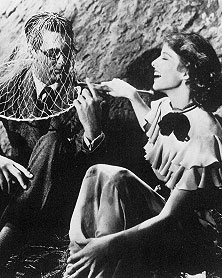


















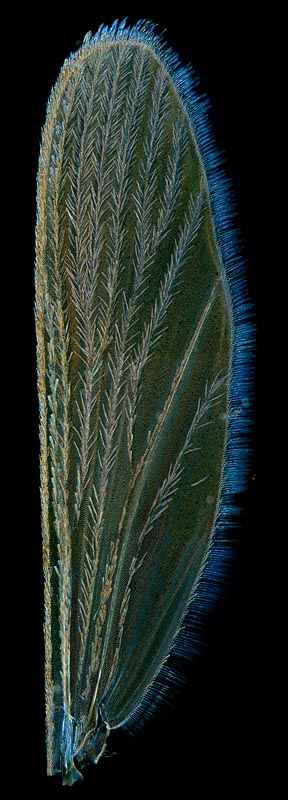











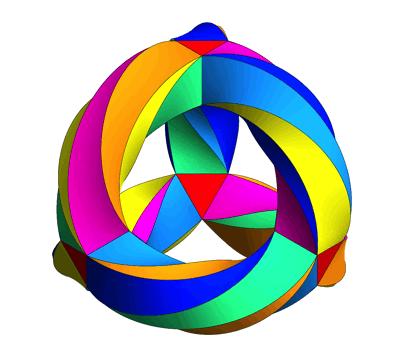
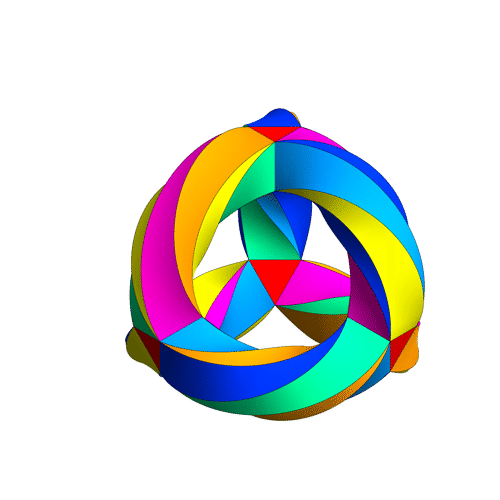





 "Speaking in Tongues III" - Moonsung 1999
"Speaking in Tongues III" - Moonsung 1999 "Speaking in Tounges I", "Ever So Lonely/Eyes/Ocean" - Weaving My Ancestors' Voices 1992
"Speaking in Tounges I", "Ever So Lonely/Eyes/Ocean" - Weaving My Ancestors' Voices 1992  "Lament", "Strange Minaret" - The Struggle 1985
"Lament", "Strange Minaret" - The Struggle 1985 "Ever so Lonely"- Third Eye (Monsoon) 1982
"Ever so Lonely"- Third Eye (Monsoon) 1982




